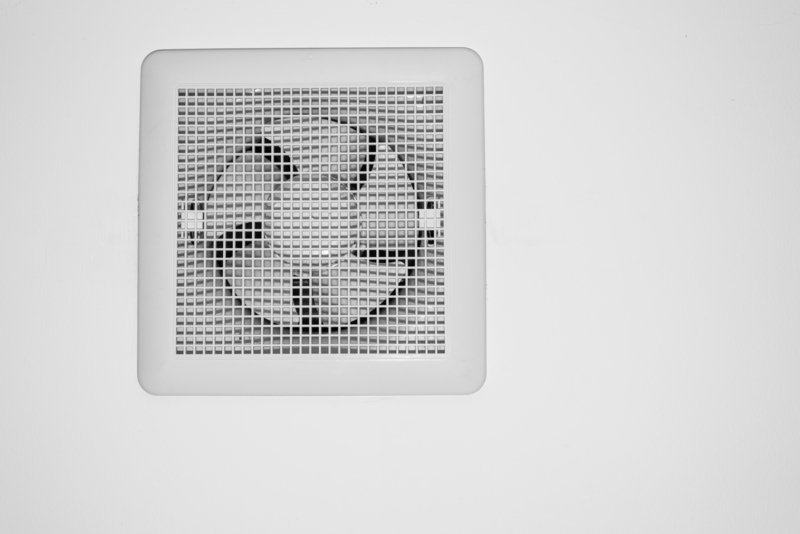Smart Hacks for a Dust-Free, Allergen-Reduced Residence
Posted on 09/09/2025
Smart Hacks for a Dust-Free, Allergen-Reduced Residence
Maintaining a dust-free home while minimizing allergens is more than a matter of aesthetics--it's pivotal for a healthier, happier living environment. Whether you are sensitive to dust, prone to allergies, or simply striving for a spotless sanctuary, modern technology and clever strategies can help you tackle dust and allergens at their source. In this article, we'll explore innovative, actionable, and effective hacks to create a dust-free, allergen-reduced residence that promotes well-being for all household members.
Why Prioritize a Dust-Free, Allergen-Low Home?
Dust and allergens lurk everywhere: behind furniture, on bedding, in carpets, and even in the air you breathe. Their presence can cause eye irritation, sneezing, coughing, headaches, and, for those with respiratory conditions, trigger more severe reactions. A thorough approach to dust control helps everyone, especially children, seniors, and those with allergies or asthma, to breathe easier and live better.
- Improved Air Quality: Reduces symptoms of asthma and allergies.
- Fewer Sick Days: Less exposure to bacteria, dust mites, pet dander, and mold spores.
- Enhanced Comfort: Cleaner surfaces, less visible grime, and a fresher indoor atmosphere.

The Ultimate Smart Hacks for a Dust-Free, Allergen-Reduced Residence
Ready to embrace a cleaner, healthier living space? Discover these top dust elimination tactics and allergen reduction solutions for every corner of your home.
1. Leverage Smart Air Purifiers
- Choose HEPA Air Purifiers: High-Efficiency Particulate Air (HEPA) filters trap 99.97% of particles as small as 0.3 microns--including pollen, pet dander, mold spores, and fine dust.
- Place Strategically: For maximum effect, locate air purifiers in bedrooms, living areas, and spaces closest to outdoor air sources (like windows or entrances).
- Look for Smart Controls: Models with app controls, air quality sensors, and scheduling features help automate and personalize allergen reduction.
2. Regular and Correct Cleaning Techniques
Proper cleaning is the backbone of a dust-free, allergen-low home.
- Dust Top to Bottom: Always start cleaning from higher surfaces (tops of cabinets, shelves, and ceiling fans) and work downwards to avoid dispersing dust onto freshly cleaned lower levels.
- Microfiber Is King: Ditch feather dusters--which just redistribute dust--and use microfiber cloths instead. They trap particles with electrostatic charge and are easily washable.
- Damp Wipe: For hard surfaces, slightly moisten your microfiber cloth to capture dust, not just relocate it.
- Vacuum Frequently: Use a vacuum with a true HEPA filter at least twice a week on carpets and floors. Don't forget upholstery and curtains!
3. Control Humidity for Allergen Reduction
- Keep Humidity Between 30-50%: This discourages dust mites and mold, two common household allergens.
- Smart Dehumidifiers: Opt for models that can be controlled and monitored remotely to maintain an ideal indoor climate.
- Use Exhaust Fans: Ensure bathrooms and kitchens are equipped with effective ventilation to minimize moisture build-up.
4. Upgrade to Hypoallergenic, Easy-Clean Materials
- Replace Carpets with Hard Flooring: Wood, tile, or laminate are simpler to clean and do not harbor dust mites like carpets.
- Opt for Washable Curtains: Avoid heavy draperies; instead, choose machine-washable fabrics or go for blinds that can be wiped down easily.
- Choose Hypoallergenic Bedding: Synthetic or tightly woven cotton stops allergen accumulation.
5. Smart Home Technology to Automate Cleaning
- Robotic Vacuum Cleaners: Today's smart vacuums can be scheduled to clean daily, even reaching under furniture and into corners where dust collects.
- Smart Sensors: Motion and air quality sensors can notify you when areas need attention or when air quality dips below recommended standards.
- Remote-Controlled Blinds: Reduce daily dust buildup by automating opening and closing--keeping dust at bay without frequent manual handling.
6. Control Entry Points for Dust and Allergens
- Install Doormats: Use heavy-duty mats outside and inside each entrance to trap dirt and dust before it's tracked in.
- Shoe-Free Policy: Encourage family and guests to leave shoes at the door, drastically minimizing dust and pollen entry.
- Weatherproof Doors and Windows: Ensure proper sealing to prevent outdoor dust and allergens from drifting inside, especially during windy seasons or high pollen counts.
7. Purify Your Bedding Routine
- Wash Bedding Weekly: Use hot water (over 130?F/54?C) to kill dust mites and remove pollen, dander, and other particles.
- Encase Mattresses and Pillows: Invest in allergy-proof covers that block dust mite penetration.
- Minimize Bed Clutter: Limit stuffed animals, throw pillows, and extra blankets that collect dust.
8. Eliminate Clutter -- The Dust Magnet
- Streamline Open Surfaces: The fewer knickknacks and paper piles, the fewer places for dust to gather.
- Organize Storage: Store items in drawers, boxes with lids, or closed cabinets to seal away dust.
- Opt for Simple Decor: Choose washable, low-maintenance decorations that can be easily cleaned.
9. Indoor Plants: Use With Caution
- Allergy-Friendly Varieties: If you love houseplants, select types that do not produce pollen or trap mold, such as snake plants or lady palms.
- Avoid Overwatering: This prevents mold growth, a common trigger for allergies.
- Dust Plant Leaves: Wipe leaves regularly to avoid dust settling and circulating back into the air.
10. Keep Pets Clean and Groomed
- Regular Baths and Brushing: Cut down on dander and fur shedding--a major source of indoor allergens.
- Pet-Free Bedrooms: Make bedrooms off-limits to pets to create a true allergen-reduced sanctuary.
- Clean Pet Bedding Often: Wash or vacuum bedding and play areas weekly.
Bonus Tips: Seasonal Adjustments for an Allergen-Reduced Environment
- During High Pollen Seasons: Keep windows closed; use air conditioning and purifiers instead of fresh air ventilation.
- Rainy Seasons: Dry laundry indoors (or thoroughly dry before bringing back inside) to prevent pollen hitchhikers.
- Monitor Air Quality: Use smart home monitors or mobile apps to keep tabs on indoor and outdoor air quality--and adjust routines accordingly.
Common Mistakes to Avoid
- Ignoring HVAC Maintenance: Dirty air filters or ducts spread dust and allergens each time the system runs.
- Not Washing Cleaning Tools: Dirty cloths and mop heads redistribute dust rather than remove it.
- Using the Wrong Cleaners: Strong chemicals or heavily scented sprays can worsen respiratory symptoms for those sensitive to allergens--opt for gentle, fragrance-free alternatives.
Smart Dust-Reduction Shopping Guide
- HEPA Air Purifiers and Vacuums: Look for true HEPA certifications, not just "HEPA-like" labels.
- Microfiber Cleaning Systems: Available as cloths, mop pads, and dusters for all hard surfaces.
- Smart Home Cleaning Devices: Robotic vacuums and mops with app integration save time and energy.
- Allergy-Proof Bedding: Includes mattress and pillow encasements, washable comforters, and hypoallergenic pillows.
- Dehumidifiers/Humidifiers: Smart options ensure effortless moisture control year-round.

Quick FAQs: Dust-Free & Allergen-Low Living
- How often should I vacuum? At least twice weekly; daily if you have pets or high traffic.
- What's the best way to control pet dander? Regular grooming, washing pet bedding, using HEPA filters, and creating pet-free zones.
- Can houseplants reduce allergens? Some can purify air, but many can also contribute to mold or pollen--choose wisely and maintain plant hygiene.
- Which cleaning products are best? Go for gentle, fragrance-free options and avoid sprays that linger in the air.
Conclusion: Transform Your Residence Into a Healthy Haven
Keeping your residence truly dust-free and allergen reduced can seem like a daunting task, but with these smart hacks and a proactive mindset, you can create an environment that supports health and tranquility. By integrating advanced cleaning technology, developing strategic routines, and making informed choices about home materials and products, you'll enjoy cleaner air, fewer allergens, and the peace of knowing your home is as safe and welcoming as it can be.
Take the first step: Start with one or two new dust-reduction strategies this week, then gradually introduce more. Your body--and your family--will thank you for it!
Want more guidance and the latest tips on keeping your home dust-free and allergy-safe? Bookmark this article and share it with family members and friends who could benefit from a healthier, cleaner living space.





